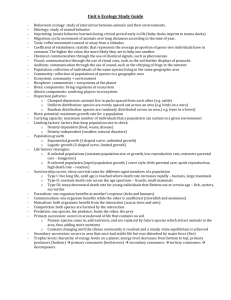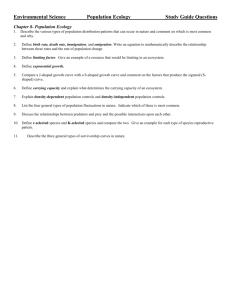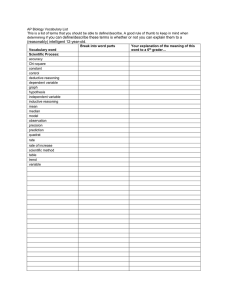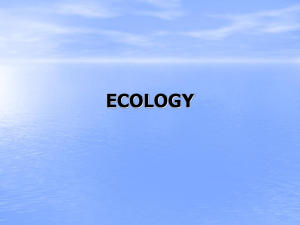Outline
advertisement
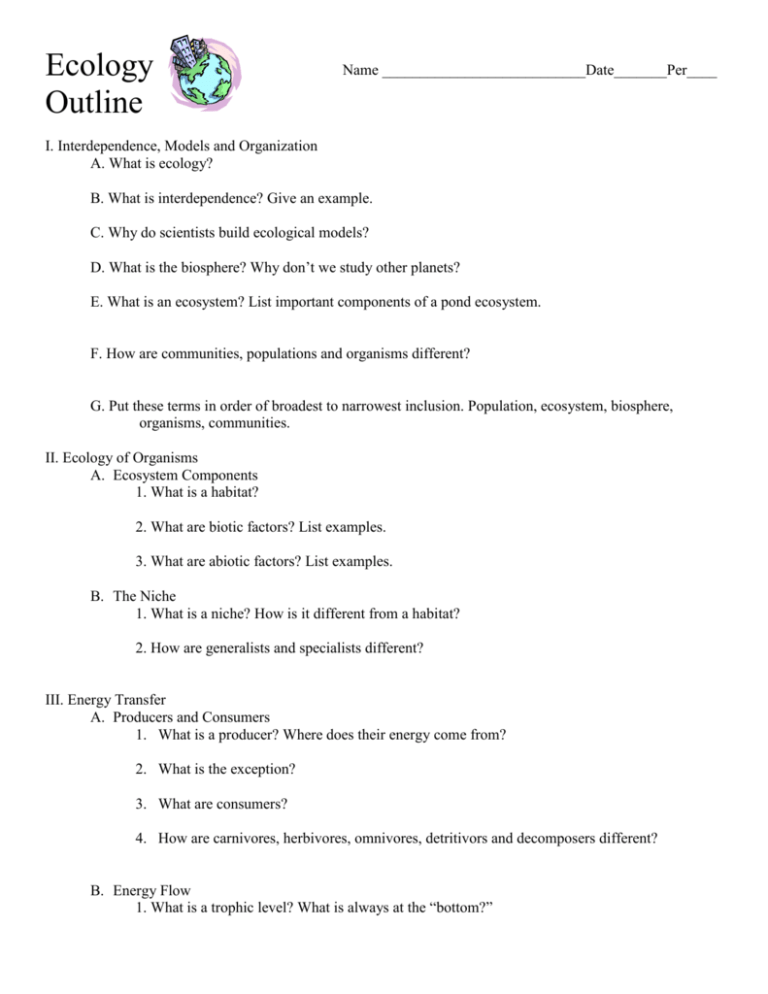
Ecology Outline Name ___________________________Date_______Per____ I. Interdependence, Models and Organization A. What is ecology? B. What is interdependence? Give an example. C. Why do scientists build ecological models? D. What is the biosphere? Why don’t we study other planets? E. What is an ecosystem? List important components of a pond ecosystem. F. How are communities, populations and organisms different? G. Put these terms in order of broadest to narrowest inclusion. Population, ecosystem, biosphere, organisms, communities. II. Ecology of Organisms A. Ecosystem Components 1. What is a habitat? 2. What are biotic factors? List examples. 3. What are abiotic factors? List examples. B. The Niche 1. What is a niche? How is it different from a habitat? 2. How are generalists and specialists different? III. Energy Transfer A. Producers and Consumers 1. What is a producer? Where does their energy come from? 2. What is the exception? 3. What are consumers? 4. How are carnivores, herbivores, omnivores, detritivors and decomposers different? B. Energy Flow 1. What is a trophic level? What is always at the “bottom?” 2. What is a food chain? Give an example using arrows. (Which way do the arrows go?) 3. What is a food web? How is it different from a food chain? 4. On average, how much energy is transferred from one trophic level to the next? 5. Why is the percentage of energy transfer so low? 6. Where will you find more individual organisms on an ecological pyramid? 7. Label each level with the general type of organism, an example and an approximate amount of energy stored at that level by those individuals. IV. Populations A. Population Dynamics 1. What is birth rate? 2. What is death rate? What is the other name for it? 3. How do you calculate the growth rate of a population? 4. How can you differentiate between immigration and emigration? 5. What is/are age structure/population pyramids? 6. Sketch a survivorship curve and briefly describe Type 1, 2 and 3 survivorship styles. B. Exponential Models 1. What is the exponential model of population growth? What does the curve look like? 2. What is the logistic model of population growth? What does the curve look like? 3. The flat part of the logistic curve is called what? What determines the height of this line? 4. *bonus: What are density-independent and density-dependent factors? V. Species Interactions A. Predator-Prey Relationship 1. What is predation? 2. Sketch a graph of the typical predator-prey cycle. Does the predator or the prey numbers rise first? B. Competition 1. What is interspecific competition? Give an example. 2. What is the competitive exclusion principle? 3. What is resource partitioning? Give an example. 4. What is intraspecific competition? Give an example. C. Symbiosis 1. What is mutualism? Give an example. 2. What is commensalism? Give an example. 3. What is parasitism? Give an example. VI. Succession A. What is ecological succession? B. How are primary and secondary succession different? Give an example of each. C. What is a pioneer species? What are some typical pioneer plants? D. What is a climax community? What are some plants that would suggest a climax community?
